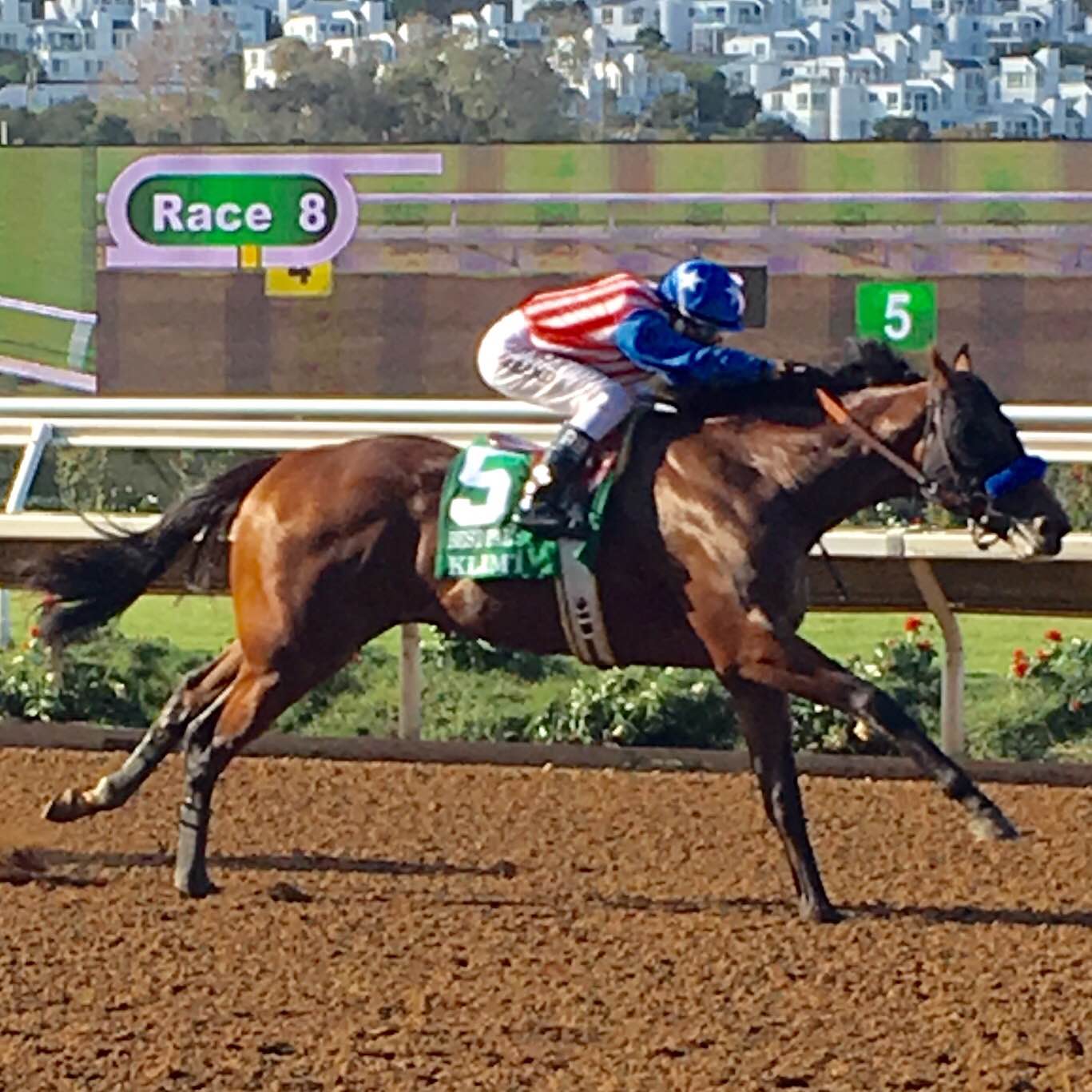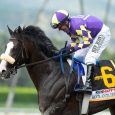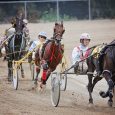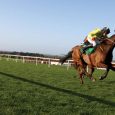Saratoga Handicapping Angles
The 40-day Saratoga racing season lasts throughout the heart of the summer, running six days a week (every day except Tuesday) from Friday, July 21 until Labor Day, Monday, Sept. 4. The 2017 Saratoga meet will feature 69 stakes races worth a combined $18.7 million, including the country’s most tightly-packed graded stakes program, loaded with Grade 1s.
While the Saratoga stakes program is certainly great, the real money for horseplayers will be won and lost in Saratoga’s daily meat-and-potatoes racing, which is still unrivaled by any other track at this or any other time of year.

Todd Pletcher has won the training title at Saratoga a record 12 times.
The first thing that should be mentioned in any Saratoga handicapping guide for 2017 should have to do with the training race. It is a safe bet that the top of the trainer’s standings will be dominated by Todd Pletcher and Chad Brown (or Chad Brown and Todd Pletcher). That 1-2 finish atop the trainer’s race should be considered the safest exacta box at the entire meet.
Chad Brown won the training title at Saratoga and set a record at the 2016 meet with 40 wins, finally getting over the hump after finishing second to Todd Pletcher in five consecutive seasons before last year. Brown accomplished his 40-win season from 164 starters, with a strong win percentage of 24 percent and a startling in-the-money [ITM] rate of 60 percent.
Pletcher, the six-time defending champ with a record 12 overall titles, was a clear second in the 2016 trainer’s race with 31 wins from 149 starters (21 percent wins / 50 percent ITM). It was a long way back to the third-leading trainer, Kiaran Mclaughlin, who had 13 wins.
In terms of a winning track profile at Saratoga, first off, Saratoga’s main track is speed-favoring at all distances, no doubt about it. The speed bias is especially prevalent in races at six furlongs or shorter, particularly with 2-year-olds. Early speed horses on or within a length of the lead at the first call win nearly 50 percent of all dirt sprints shorter than six furlongs. Pressers and the occasional stalker tend to win the rest. Speedsters and pressers also do exceptionally well at the commonly run distance of six furlongs.
Second, as I noted in a past article, with the move to Saratoga, the focus in route racing flip-flops from benefiting one-turn route specialists at Belmont to favoring route horses that do their best running around two turns — and at 1 1/8 miles — as opposed to one mile or 1 1/16 miles.
Look down the past performances and bet horses whose best route races came on more traditional two-turn layouts such as Aqueduct, Gulfstream, Churchill, Keeneland, the mid-Atlantic region, or in past races at Saratoga, but not at Belmont. This is particularly true if a horse has run past races around two turns at 1 1/8 miles (Saratoga cards no dirt races at one mile and 1 1/16 miles). Give these two-turn distance horses the edge against overbet horses that do their best running in Belmont’s one-turn route races.
Third, downgrade the three inside posts in turf sprints, particularly the rail, while upgrading horses drawing far outside posts in those races. This is especially important in large fields with more than eight runners.
Fourth, outside posts are negative factors on the Saratoga turf courses in routes to varying degrees. Posts 8 and outward are slight disadvantages on the turf at most distances, while far outside posts 10 and outward are usually poor bets, period. The inside three posts can offer an advantage to horses running on the inner turf course at the distances of one mile and 1 1/16 miles.
Lastly, in Saratoga grass races, speed generally plays a little better on the Mellon course than on the inner course. The pace profile of the average turf winner at Saratoga is a horse that is roughly four lengths off the pace at the first call and 2 1/2 lengths off the pace at the second call. Hold more strictly to this pace preference on the Mellon course, where deeper-closing winners happen less frequently than on the inner turf.
If you can get to the paddock for inner track turf races, look for physically small, athletic-looking horses instead of large, long-striding horses. The little guys handle the tight inner course turns nicely, while the big bulky horses generally don’t.
Speaking of the turf, due primarily to the fact it has two turf courses and a giant amount of turf horses on the grounds hailing from North America’s top turf stables, no track runs as many meaningful turf races at every level and division as Saratoga. As a percentage of the overall number of races run at the meet, turf racing is arguably more heavily-weighted at Saratoga than at any other track. Therefore, it pays to know your stuff.
Inside post positions are almost always preferred in two-turn grass races, especially at Saratoga where the fields are usually large, the course is narrow and traffic is a factor. The first turn has a tendency to come up on the field very soon after the start of a turf route, and a horse breaking from the inside that is able to hug the rail around the first turn, may gain lengths on a competitor from the far outside destined to lose ground while wide.
That ground loss can be very difficult to make up during the running of the race, and the result is that outside horses often end up falling short — even in cases where they may have been the best horse in the race.
Far outside posts — we’re talking about posts 10-12 — are not the place to be in turf routes at Saratoga, because they often lead to ground loss and wide trips. Many turf horses who have lost their last race after breaking from an outside post come back to win their next start at good odds if fortunate enough to get a better post draw.
You may or may not choose to take post positions into account when handicapping turf route races, but one thing you should never ignore is a turf horse making a positive shift to an inside post after breaking from an outside post last time out. There are plenty of times when horses are good enough to overcome outside posts en route to victory. However, when that is not the case, you should be able to identify that information in a horse’s past performances in order to potentially take advantage of it next time out.
And then there are the turf sprints, which are run at an average rate of more than one per day at Saratoga throughout the season. Saratoga turf sprints are all run at 5 1/2 furlongs. This differs greatly from Belmont, where turf sprints can be either 6 or 7 furlongs — with the 7-furlong turf sprints being run on the main turf course, and most of the 6-furlong turf sprints run over the inner turf.
The main thing to understand about Saratoga turf sprints, before anything else, is that outside posts rule. I recommend you stick with this angle in big turf sprint fields, because it has been a major trend at Saratoga for more than a decade. Examples of this were in 2009, when inside gates in turf sprints won just 1-for-43 and in 2010, when post one went 2-for-45.
In 2011, the rail was awful again, going just 1-for-41 (2 percent). More turf sprints carded for smaller fields have helped to ease this trend and, statistically, make the inside posts look better over the last two or three years. However, don’t overlook this angle when you see Saratoga turf sprints with more than eight horses in the field.
Larger turf sprint fields make the inside posts nearly impossible. Pass on betting the inside horses in Saratoga turf sprints, and then take note of those horses and bet them back next time out when and if they move outside. Besides just the rail, the other far inside posts are often not much better in Saratoga turf sprints.
Also worth mentioning is that dating back to the 2005 meet, Linda Rice has been the undisputed queen of the Saratoga turf sprint races, with no other trainer coming even remotely close to putting up her kinds of numbers. In 2015, however, trainer Christophe Clement began to put his stamp on these races, winning twice as many turf sprints as any other single trainer other than Rice.
Wrap-Up
By using this information and these simple tips and trends, as well as the ones posted previously, I hope you will have a foundation for what it takes to win at the 2017 Del Mar and Saratoga summer meets. Del Mar and Saratoga are, after all, the ideal meets for horseplayers who follow track trends because so many novice handicappers and tourists pump so much money into the pools. Opportunities always abound for serious horseplayers to get their share of the loot over the course of the summer.
Enjoy the racing at sunny Del Mar and Saratoga. I hope you can benefit from this analysis and use the information to your best advantage when trying to make money at racing’s two top summer destinations.
Best of luck!
(July 19, 2017) If you are a serious horseplayer and you have not been looking forward to the Saratoga and Del Mar meets for what seems like forever, it might be time to check your pulse. Saratoga and Del Mar are the summer places to be for all horseplayers and horse racing fans alike.
For handicappers, the Del Mar and Saratoga meets provide nearly non-stop action, and it’s easy to see why horseplayers circle these annual centerpieces on their summertime racing calendars weeks or even months in advance.
The summer racing seasons at Del Mar and Saratoga are all about the top horses, trainers and jockeys in horseracing and the top-notch handicapping and betting opportunities that go along with them. The fields will be huge, the competition will be stiff and evenly-matched and the payoffs will often be pricey and loaded with good value for horseplayers who are willing to put in the necessary effort.
Del Mar will begin its 2017 summer meet on Wednesday, July 19, and Saratoga is ready to kick-off its 2017 meet on Friday, July 21. Both meets will run the remainder of the summer up through Labor Day, Sept. 4.
Del Mar and Saratoga are the ideal meets for horseplayers who follow track trends and do their homework, because you know that many novice handicappers and tourists will be pumping money into the pools.
There is particular interest in Del Mar this year for several reasons, including the fact that the track will be hosting its first-ever Breeders’ Cup later this fall. The track is also expected to be the summer home of reigning Horse of the Year ARROGATE.
If all goes as planned, Arrogate may be making all three of his remaining starts this year at Del Mar, starting with a prep in the Grade 2 San Diego Handicap on July 22, then in the Grade1 $1 million Pacific Classic on Aug. 19,and then in the Breeders’ Cup Classic this fall.
Del Mar’s stakes program will take on added significance this year with the track hosting the Breeders’ Cup. Overall, Del Mar will host 33 stakes, including 21 Graded stakes with six Grade 1s at the summer meet. Five races will be Breeders’ Cup “Win and You’re In” races, with the Bing Crosby on July 29 (Sprint), the Clement Hirsch on July 30 (Distaff) and the Pat O’Brien (Dirt Mile) and the Del Mar Handicap (Turf) on Aug. 26 joining the Pacific Classic as featured events.
Of course, these meets, or any meet for that matter, can sure be made even a lot more enjoyable when you are winning. Therefore, let’s take a look at a few short and simple handicapping tips that can get you started in the right direction and give you an information edge as you get ready to unleash your bankroll this summer. Read on for some advice on what to look for when betting at “The Spa” and “Where the Turf Meets the Surf.” Hopefully it can help you to enjoy profitable meets at Del Mar and Saratoga.
Today, I’ll discuss Del Mar and tomorrow I’ll tackle Saratoga.
Del Mar Handicapping Angles

Klimt draws clear from Big League in the stretch of the Best Pal Stakes at Del Mar last year (photo by Margaret Ransom).
It’s summer in Southern California and, for horseplayers, that can only mean one thing: Del Mar. For handicappers, Del Mar will be a welcome change from the small fields, limited race days, and sparse betting opportunities offered at the recently concluded June portion of the Santa Anita meet followed by Los Alamitos.
After eight years racing on a synthetic surface, Del Mar hosts its third straight year of dirt racing for track’s 78th summer racing season.
Del Mar’s main track is certainly back to favoring speed a lot more now that it is dirt than it did back in the Polytrack days, when speed had difficulty holding up. However, while the slight preference on the Del Mar main track goes to speed, the track overall has played fair, and the front-end preference could not at all be termed a “bias”. In fact, most other race tracks, including the others on the SoCal circuit, favor speed much more so than Del Mar.
The big news horseplayers will want to keep an eye on at Del Mar at the 2017 meet is the fact that alterations have been made to the main track under the supervision of track maintenance expert Dennis Moore. Del Mar has made alterations to the track’s banking and grading to make it nearly identical to Santa Anita, and the main track has also been re-surfaced with the same El Segundo sand used in Santa Anita’s main track.
Handicappers will have to watch the main track carefully to take note if the track continues to play like the last couple Del Mar meets or if it starts to play more like the races run at Santa Anita.
Let’s look at some Del Mar dirt track trends from 2015-16 and see how they can help us in 2017:
- At the most commonly run distance of six furlongs on dirt, Del Mar will favor horses with tactical speed, capable of leading, pressing or stalking, but certainly not as much as at Santa Anita. Effectively, this means that come-from-behind horses will have better chances at Del Mar than at the previous Santa Anita meet.
- At six furlongs, horses definitely want to race within three lengths of the pace at the first call because the majority of these races are won by horses that are that close to the pace. Wait and see if Del Mar’s new main track surface starts helping frontrunners and pressers even more.
- If you want to bet against frontrunners in Del Mar main track sprints, it is much better to do so at the distances of 6 ½ and seven furlongs. At Del Mar, frontrunners at these distances still do well, but the big difference here is relative to Santa Anita, where front-runners do much better, comparatively, than at Del Mar. In other words, frontrunning or pressing winners at Santa Anita often lose at Del Mar, while stalking or closing losers from Santa Anita often start to win.
So, this gives us our first betting angle at Del Mar: Downgrade front-runners who won at Santa Anita at 6 ½-7 furlongs and upgrade horses coming from Santa Anita with some tactical speed that came up a little short. Watch this factor and see if it has changed at all due to Del Mar’s recent track work.
Del Mar Turf Races
Del Mar’s new turf course already has three years under its belt and is no longer a total unknown. Del Mar cards some of the country’s best turf racing of the summer. Since the new turf course was installed, Del Mar turf races are now carded for up to a maximum of 14 runners.
- With more horses in the turf races, the increased field sizes have had an effect on the importance of drawing a good post position. This is particularly true in turf routes longer than 1 1/16 miles, in which no horse won any race at any distance from outside post 8 in 2014 (summer and fall meets combined). In 2015, the outside posts remained a disadvantage with only a combined total of 12 horses winning from outside post 8 (including sprints), and in 2016, when just 16 horses won from outside post 8 (including sprints).
- At the most commonly run turf route distance of one mile, it is also worth noting the surprising post position revelation that the inside two posts, posts 1-2, do not have favorable stats and therefore do not provide any advantage. This is contrary to what a lot of people would falsely assume about the greatest post advantage at that one-mile distance, and anytime you have something contrary to what most people believe, it is usually something well worth considering in your wagering strategy.
- Therefore, in terms of post draws in turf routes overall, the best positions for bettors to focus on are posts 3-8. This is particularly true at one mile and 1 1/8 miles.
- In terms of running style preferences in turf routes, turf closers tend to do much better at Del Mar than at Santa Anita and should therefore be upgraded. Also, the pace pressers and stalkers in these races — those not on the lead but within four lengths of the pacesetter — do the best, accounting for roughly 50 percent of the turf route victories.
- Turf sprints have been unpredictable in the three years of Del Mar’s new turf course, shifting from year-to-year in terms of favoring early speedsters or closers, or inside posts versus middle or outside posts. Keep an eye on this as the 2017 season progresses. Meanwhile, one thing does seem certain: Santa Anita turf sprint form (from the 6 ½-furlong downhill turf course) does not translate well to Del Mar. Various kinds of horses win these very different five-furlong races at Del Mar, so expect a lot of form reversals — both good and bad — from horses’ recent turf sprints at Santa Anita. Also upgrade speed, which has a much better chance to hold on in Del Mar’s shorter turf sprints as opposed to at Santa Anita.




